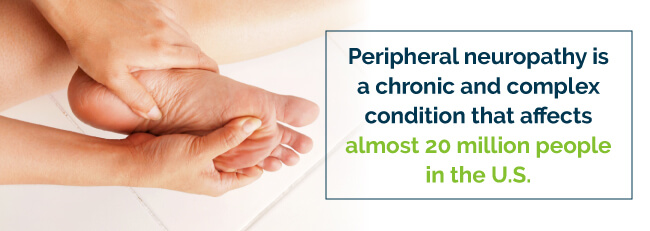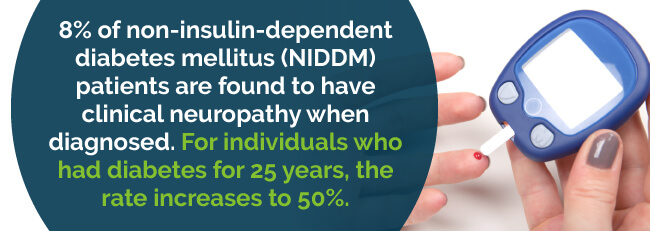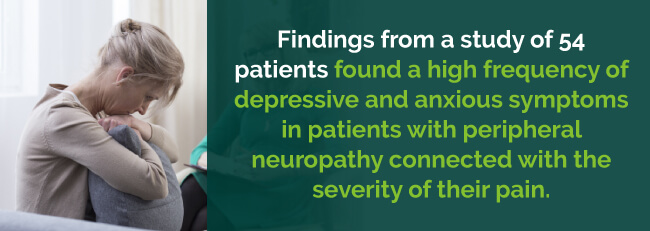Vicki
Herbal Alchemist
Well that's what really matters; right?
Have you ever made a transdermal patch with your salve or oil?
Actually, no, but that is an intriguing idea. I need to find something that wouldn’t absorb all the medicine.
|
Sponsored by |
|---|
|
|
|
Well that's what really matters; right?
Have you ever made a transdermal patch with your salve or oil?
My middle son is a AGENT 4 SPORTS and he gave me & and my daughter a CBD roll.I make transdermal things all the time. Just chatting with a friend about them recently. A buddy from the forums, Chippy, got me interested in the stuff a couple of years back. DMSO, https://en.wikipedia.org/wiki/Dimethyl_sulfoxide, is a whole bunch of things in one wierd liquid. It's the compound that put the trans in transdermal.
Amongst it's uses is as a polar aprotic solvent. This means that cannabinoids infuse quite readily. Try a bit of decarbed kief, soaked for a few minutes and strained through a coffee filter, and bingo it's infused, ready for a dropper bottle, all cannabinoidy and topical pain relievery. At full pharmaceutical strength it can cause a harmless mild itching or burning sensation. Dilute it with Aloe Vera at 90% dmso:10% aloe to make a lovely topical gel that can be used pretty much anywhere. It's as edible as you'd like it to be, strange taste aside.
Anyhoo, do some research before you start ingesting, injecting, or eye-dropping any compound into yourself. Thats for both things you make yourself and things you purchase from somewhere. There's no substitute for home made quality...
https://chem.libretexts.org/Core/Or...ular_Forces/Polar_Protic_and_Aprotic_Solvents




I think this article really does a good job explaining what Neuropathy symptoms are and how they are affected by traditional medications and cannabis.
Medical Marijuana and Peripheral Neuropathy
Peripheral neuropathy is a chronic and complex condition that affects almost 20 million people in the U.S.Telltale symptoms of the condition are numbness, weakness and pain — particularly in extremities like your feet and hands. Recently, people have begun turning to medical marijuana for peripheral neuropathy to relieve their pain associated with the condition.

What Is Peripheral Neuropathy?
Peripheral neuropathy occurs when you have nerve damage. Not only does it cause numbness, pain and weakness in your feet and hands, but it also affects other parts of your body, as well.
Many people with peripheral neuropathy typically describe the pain they experience as burning, stabbing or tingling. Symptoms improve in many cases, particularly if a treatable condition, such as diabetes, causes it.
Your peripheral nervous system sends information from your spinal cord and brain to other areas of your body. A common cause of peripheral neuropathy is diabetes mellitus, but the condition can result from a variety of other causes like infections and traumatic injuries.
Types of Peripheral Neuropathy
Peripheral neuropathy may be brought on by:
Certain medications, such as medications for cancer or HIV/AIDS, may also bring it on. When you have peripheral neuropathy and don’t know the cause, it’s referred to as “idiopathic.”
- A genetic predisposition
- Diabetes
- Alcoholism
- Exposure to toxic chemicals
- Inflammation
- Infections
- Malnutrition
- Nerve and injury compression
History of Peripheral Neuropathy
There’s little information on the natural history and incidence of neuropathy in individuals who aren’t dependent on insulin for diabetes mellitus. What we do know is 8 percent of non-insulin-dependent diabetes mellitus (NIDDM) patients are found to have clinical neuropathy when diagnosed. For individuals who had diabetes for 25 years, the rate increases to 50 percent.

The prevalence of NIDDM patients with polyneuropathy increases with time and may be more prominent in patients with hypoinsulinemia, which is a condition of having abnormally low levels of insulin in your blood.
Symptoms of Peripheral Neuropathy
Symptoms of peripheral neuropathy typically begin with prickling, numbness or tingling in the fingers or toes. It can spread up to your hands or feet and cause freezing, burning, shooting or throbbing pain, which often worsens at night.
You may feel either periodic or constant pain, but generally, you feel the pain on both sides of your body equally in both feet and hands. Some types of peripheral neuropathy develop suddenly. Others come on gradually over many years.
Peripheral neuropathy symptoms often include:
The symptoms you experience depend on which of your peripheral nerves have damage. You have three peripheral nerve types: sensory, motor and autonomic.
- Freezing pain or burning sensation
- Feeling as though you’re wearing an invisible sock or glove
- Loss of coordination and balance
- Shooting, sharp, jabbing, burning, stabbing or electric-like pain
- Trouble sleeping due to leg and foot pain
- Muscle twitching or cramping
- Muscle weakness
- Unusual sweating
- Difficulty moving your arms or walking
- Abnormalities in pulse or blood pressure
- Being unable to feel your feet
- Inability to hold onto objects
In some neuropathy cases, all three nerve types are affected together, while others only affect one or two. Most patients with this condition suffer from polyneuropathy, which is where damage occurs to many nerves simultaneously.
Effects of Peripheral Neuropathy
The nerve damage from this condition can have lasting effects that include the below physical and mental repercussions.
- Problems Moving: Since peripheral neuropathy may affect your motor nerves, you could experience partial or total loss of muscle and movement control. For instance, you could experience paralysis of specific body parts, such as your legs or arms. You could also develop muscle atrophy, where you lose some muscle tissue or lack dexterity or muscle control, affecting your ability to perform fine movement tasks such as writing. If you have damaged autonomic nerves controlling your involuntary functions, it may also impair your movement.
- Weight Loss: Some patients with peripheral neuropathy lose weight due to their autonomic nerve damage symptoms. After eating, they may feel nausea and vomit. Peripheral neuropathy autonomic symptoms cause them to feel full after they eat even a small amount of food, thereby affecting their weight. Patients with motor nerve damage to their throat have a hard time swallowing, causing them to eat less.
- Low Self-Esteem: Peripheral neuropathy symptoms may lower your self-esteem. For instance, you may have impotence problems you feel self-conscious about. Another peripheral neuropathy-related problem is urinary incontinence, which can affect your self-esteem.
- Anxiety and Depression: Like chronic pain and sensory-motor dysfunctions, peripheral neuropathies can trigger psychiatric disorders, including depression and anxiety. In fact, findings from a study of 54 patients found a high frequency of depressive and anxious symptoms in patients with peripheral neuropathy connected with the severity of their pain.

Peripheral Neuropathy Statistics
According to the Foundation for Peripheral Neuropathy:
Current Treatments Available for Peripheral Neuropathy and Their Side Effects
- Around 70 percent of diabetic patients have peripheral neuropathy.
- Around 40 percent of cancer patients have peripheral neuropathy.
- Around 30 percent of HIV/AIDS patients have peripheral neuropathy.
Goals of treatment are to address the underlying condition causing your peripheral neuropathy to relieve your symptoms. If there’s no underlying condition detected in lab tests, your doctor may monitor you closely to see if you show improvement in your neuropathy.
Medications
Along with medications used to treat any underlying conditions you have associated with your peripheral neuropathy, other medications, including those below, can also relieve your symptoms.
Pain relievers: For mild symptoms, over-the-counter pain medicine, such as nonsteroidal anti-inflammatory drugs, can help. If your symptoms are more severe, your doctor may prescribe you prescription pain relievers like oxycodone or tramadol. However, these opioids can lead to addiction, so your doctor should only prescribe them when other medications can’t effectively relieve your pain.
Side Effects of Pain Relievers
Depending on the medication, you may have:
Anti-seizure medications: Your doctor may prescribe medications, like pregabalin or gabapentin, to treat the nerve pain you’re experiencing.
- Dizziness, feeling faint or lightheaded
- Constipation
- Nausea or vomiting
- Drowsiness
Side Effects of Anti-Seizure Medications
You may experience:
Topical treatments: Medications, such as capsaicin cream, may offer you modest improvements in peripheral neuropathy symptoms. You may have some skin irritation and burning in the area where you apply the cream. You may also apply lidocaine patches to your skin to relieve your pain.
- Nausea
- Dizziness
- Vertigo
- Vomiting
- Tremor
- Fatigue
- Blurred vision
- Ataxia
- Headache
Side Effects of Lidocaine Patches
You may experience:
Antidepressants: These medications include tricyclic antidepressants such as doxepin and amitriptyline, and physicians also prescribe them for pain relief.
- Dizziness
- Drowsiness
- Numbness at site of patch
Serotonin and norepinephrine reuptake inhibitors like Cymbalta can ease the diabetes-related pain of peripheral neuropathy.
Side Effects of Antidepressants
You may experience:
Plasma Exchange and Intravenous Immune Globulin
- Nausea
- Dizziness
- Dry mouth
- Constipation
- Decreased appetite
- Drowsiness
If you have an inflammatory condition, your doctor may recommend treatments to temporarily suppress the activity of your immune system. Plasma exchange is the removal of your blood to remove antibodies and different proteins from it and then return it to your body. Immune globulin is where your body receives high levels of proteins acting like immunoglobulins, or antibodies.
Transcutaneous Electrical Nerve Stimulation (TENS)
With TENS, the doctor places electrodes on your skin to deliver gentle and varying frequencies of electric current. TENS is typically applied for a month, 30 minutes a day.
Physical Therapy
When you’re experiencing muscle weakness, this type of therapy can help improve your movements. In addition to physical therapy, you may also have to use a cane, foot or hand braces, wheelchair or walker, depending on your level of movement and mobility. Some patients try dry brushing to increase circulation and improve neuropathic pain through nerve stimulation.
Surgery
Surgery may be necessary if you have nerve pressure causing your neuropathy, such as pressure from a tumor. You may have drainage, bleeding or swelling at the site of surgery.
Lifestyle Modifications
To help you manage your peripheral neuropathy:
Medical cannabis for peripheral neuropathy is another option we’ll go over next.
- Take care of your feet by regularly checking for blisters and cuts and wearing padded shoes and loose, cotton socks.
- Quit smoking.
- Exercise.
- Avoid drinking excessive alcohol.
- Eat healthy meals.
- Monitor your blood glucose if you are prediabetic or have diabetes.
How and Why Marijuana Can Be an Effective Treatment for Peripheral Neuropathy
Lately, cannabis is showing promise in providing relief to patients who aren’t finding relief from other types of treatment. This efficacy is mainly due to the relationship of the substance to your internal endocannabinoid system. Inhaling marijuana can thwart diabetic neuropathy pain while not impairing cognitive function significantly, according to a new study. And, the higher dose you use, the more relief you get for your pain.

Your peripheral nerves identify sensations of pain and contain cannabinoid receptors any form of marijuana consumption can impact. When CBD and THC enter your body, they activate your body’s CB1 and CB2 receptors to regulate your central nervous system and neurotransmitters, assisting in managing your levels of pain.
One study in 2010 showed inhaling a single 25 mg dose of 9.4 percent THC herbal marijuana three times a day, five days a week, helped reduce pain intensity, improve sleep and was tolerated well.
Another 2013 study showed when researchers compared medical weed with standard neuropathic pain medicine, the weed reduced pain effectively at small 1.29 percent doses and 3.53 percent medium doses.
What Side Effects and Symptoms of Peripheral Neuropathy Can Medical Marijuana Treat?
Marijuana for peripheral neuropathy, despite low active cannabinoid concentrations, reduced chronic pain linked to peripheral neuropathy in participants of another study. It also eased their acute pain. The pain relief the medical cannabis provided during the study was equivalent to or even better than the pain relief other drugs like tricyclic antidepressants, anticonvulsants and other medications evaluated for peripheral neuropathy provided.
Chronic pain from neuropathy can lasts for weeks or even years, and is persistent. It’s usually caused by nerve damage and may leave patients feeling hopeless.
This pain may get so overwhelming it eventually causes depression in patients. Patients often turn to strong prescription medications like Oxycodone and Vicodin just for the smallest bit of relief possible to get through the day.
For many years, these strong chemical medications were the only options patients had to treat their chronic pain and often led to dependence. However, cannabis is now becoming more widespread, and both patients and researchers are finding it just may be an excellent alternative to these harsh, potentially addictive medications.
Cannabis and peripheral neuropathy treatment can help with peripheral neuropathy symptoms such as:
Researchers continue to look into the mechanism of how cannabis works in treating peripheral neuropathy symptoms. One theory is the natural endocannabinoid system of your body — also related to various functions like memory, pain, appetite and mood — runs parallel to the endorphin system in some respects, and the endorphin system plays an important and well-known role in pain management.
- Sharp, shooting, burning or stabbing pain
- Muscle twitching or cramping
- Sweating — cannabis has a anticholinergic effect, or drying, on the body
- Muscle weakness
- Difficulty sleeping due to foot and leg pain
- Anxiety and depression
- Inflammation
Best Strains of Marijuana to Use for Peripheral Neuropathy Symptoms and Treatment Side Effects
Certain marijuana and peripheral neuropathy strains could help you find relief from your pain and other peripheral neuropathy symptoms. Below are some strains recommended based on the chemical makeup of their terpene profiles, cannabinoids and CBD-to-THC ratios. Also, work with your medical marijuana doctor or budtender to learn about other cannabis strains that might be helpful for peripheral neuropathy.
Best Methods of Marijuana Treatment to Use to Treat Side Effects and Symptoms of Peripheral Neuropathy
- Afghan Kush (Indica): A good strain if you’re suffering from back or muscular pain. It has analgesic and anti-inflammatory properties and will help you stay relaxed.
- White Widow (hybrid): A balanced hybrid strain known for its sleep, stress and pain-relief qualities. You’ll benefit greatly with this strain if you’re struggling with chronic pain. You’ll also get a boost of energy to help keep you moving all day long while managing your pain.
- Jack Flash (hybrid): An ideal Sativa-dominant hybrid good for pain management all day long. It’s slightly energizing and uplifting — much like a caffeine boost. It’s a neuro-protector, painkiller and even has anti-inflammatory and anti-tumor effects.
- ACDC (hybrid): An effective pain-killing strain, delivering both THC and CBD.
- Harlequin (Sativa): A helpful strain to fight inflammation and pain.
- Green Crack (Sativa): Helps treat pain related to inflammation, depression and anxiety.
- Remedy (hybrid): Treats pain related to nerve inflammation and reduces stress and anxiety. It also works well for muscle swelling and pain.
Peripheral neuropathy patients can use a variety of methods to take cannabis.
Getting Started on Your Marijuana and Peripheral Neuropathy Therapy
- Inhalation: You can use traditional methods of inhalation to get your medical cannabis, like smoking it with pipes or rolling papers.
- Edibles: If you don’t want to inhale your medical cannabis for peripheral neuropathy, you have the option to eat it. Not only do marijuana edibles, like brownies and cookies, provide effective symptom relief, but for some patients, they also add essential calories.
- Concentrated marijuana: Another alternative method for patients is concentrated cannabis extracts and oils. Patients can choose to smoke or vaporize them.
- Topical application of marijuana: Topical applications may feature both CBD and THC while coming in various forms like balms, lotions and ointments.
No matter what strain and method you decide on for your marijuana and peripheral neuropathy therapy, you still require a recommendation from a licensed medical marijuana doctor. You also need a reputable place to get your medical cannabis.
New Mexico, Arkansas, North Dakota and Montana already approve peripheral neuropathy as a qualifying condition for medical cannabis. Many other states approve chronic pain. Here at MarijuanaDoctors.com, you can check your state and search for a medical marijuana dispensary or get in touch with a doctor easily all under one roof.
I was put on neurontin for sciatica a few years ago. It helped... but also made my hair start falling out. I chose pain over being bald lol...I've taken neurontin, cymbalta, and lyrica for it. The only one that helped was lyrica, but to get relief I had to take a lot of it and then it made me feel goofy
I was put on neurontin for sciatica a few years ago. It helped... but also made my hair start falling out. I chose pain over being bald lol...
It's amazing to me how much cannabis helps with pain in general; including pain from sciatica and neuropathy (which I have developed a slight case of in my toes; I suspect from my back issues). And it's wonderful to be able to use a natural medicine rather than the pharma drugs that can have such awful side effects. I'm glad you find relief from it as well.
Weaning off some of these pharma drugs can really wreck havoc in your system and in your head..... Hopefully your friend has also turned to more natural fixes?
God that's awful!His withdrawal symptoms were and still are suicidal thoughts, depression, sleep problems, and nausea. He told me its been very hard on him to get off it.
Anti-seizure medications: Your doctor may prescribe medications, like pregabalin or gabapentin, to treat the nerve pain you’re experiencing.
Side Effects of Anti-Seizure Medications
You may experience:
- Nausea
- Dizziness
- Vertigo
- Vomiting
- Tremor
- Fatigue
- Blurred vision
- Ataxia
- Headache
Its incredible that it took so much money and all that brain power to determine what any pain patient who has used MJ knows immediately....MJ potentiates the analgesics and hence less is needed. I immediately knew this the first time I ever took a percocet and consumed cannabis.Conclusions.
Our study suggest that Cannabis therapy, as an adjunct a traditional analgesic therapy, can be an efficacious tool to make more effective the management of chronic pain and its consequences on functional and psychological dimension.
Further randomized, controlled trials are needed to confirm our conclusions.
Clin Ter 2018; 169(3):e102-107. doi: 10.7417/CT.2018.2062
http://www.clinicaterapeutica.it/ojs/index.php/ClinicaTerapeutica/article/view/183/91
I just had the same experience... they gave me narcs after my surgery but I was hell bent that I wasn't getting addicted this time. So I tried very hard to only take them as needed and supplemented with cannabis. I'm narc free now and only using cannabis for pain. I find dabbing helps most because it's a 'quick shot' of meds. Then I'll supplement with vaping afterwards. I don't foresee needing narcs for PT either.Yes I just went through a few weeks of Hydromorehone. I used cannabis as well. I didn’t need to take as much of the medication after the first week thanks to cannabis. After two knee replacements I know what works best for me. Eventually you only need the weed, after a few weeks, anyway that was my case. I know some folks are on hard core medication longer after a few weeks for knee replacement. Even with no complications. They need to take it before Physical Therapy sessions is what they say.



I concur. I hate the way I feel on opiates... which is a far cry from the way I used to feel about them. I also no longer enjoy the 'high' from them; another change in thought process. I'm happy that I've finally arrived at that juncture lol. I've been addicted to them so many damn times in my life after multiple surgeries. It's a wonderful thing to be able to say I hate them.I don’t know how people can stand the opiates over an extended period of time. The constipation alone is a nightmare for me. I had to low dose myself. Not being able to go to the bathroom is a horrible feeling.
It did wonders for my sciatica but my hair started falling out. I was one of the 1% that gets that side effect.Gabapentin didn’t help.
I've had nerve blocks for back pain as well and they do seem to help; as well as steroid injections. It's usually a temporary fix though.Other options for me are nerve blocks (surgical procedures) or cannabis. CBD strains...
|
Sponsored by |
|---|
|
|
|